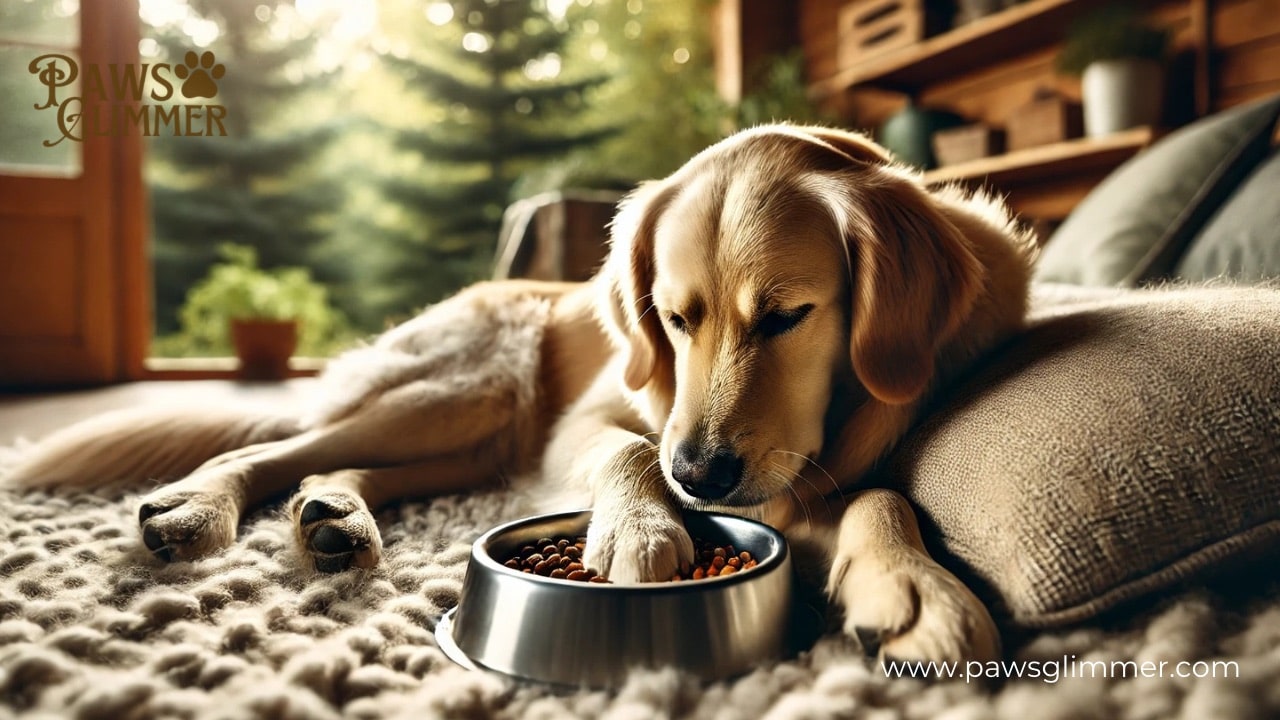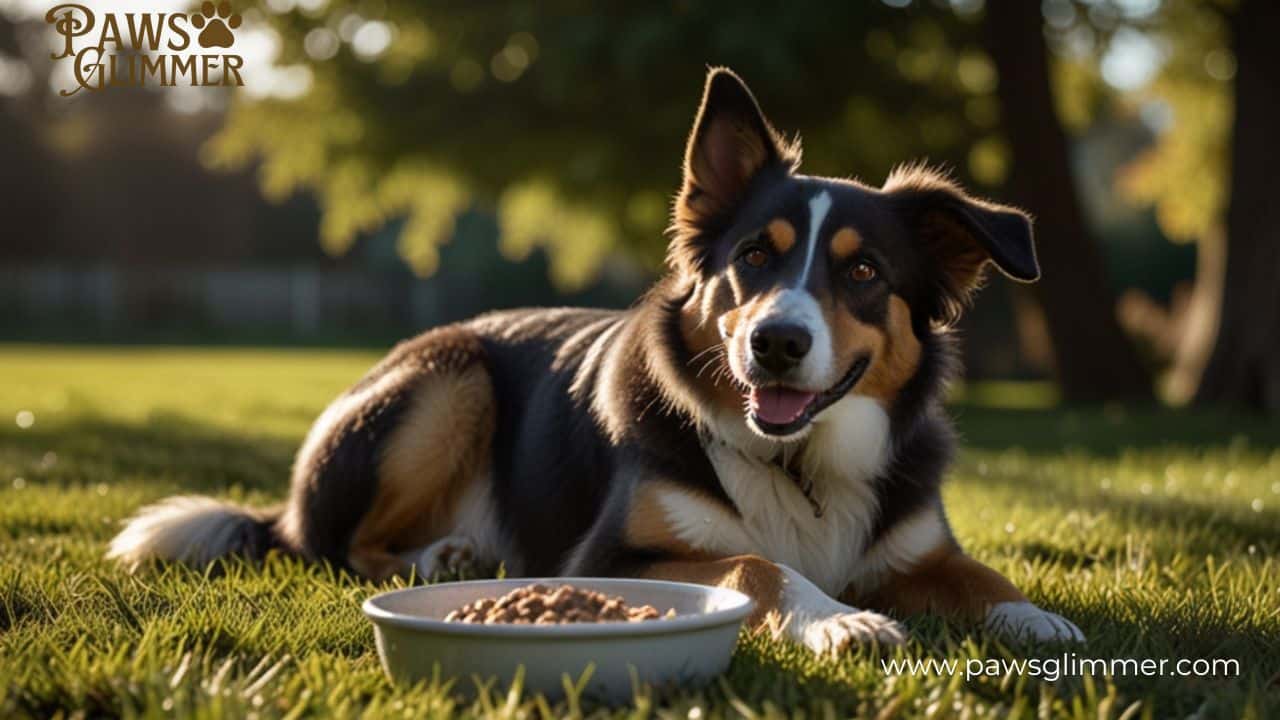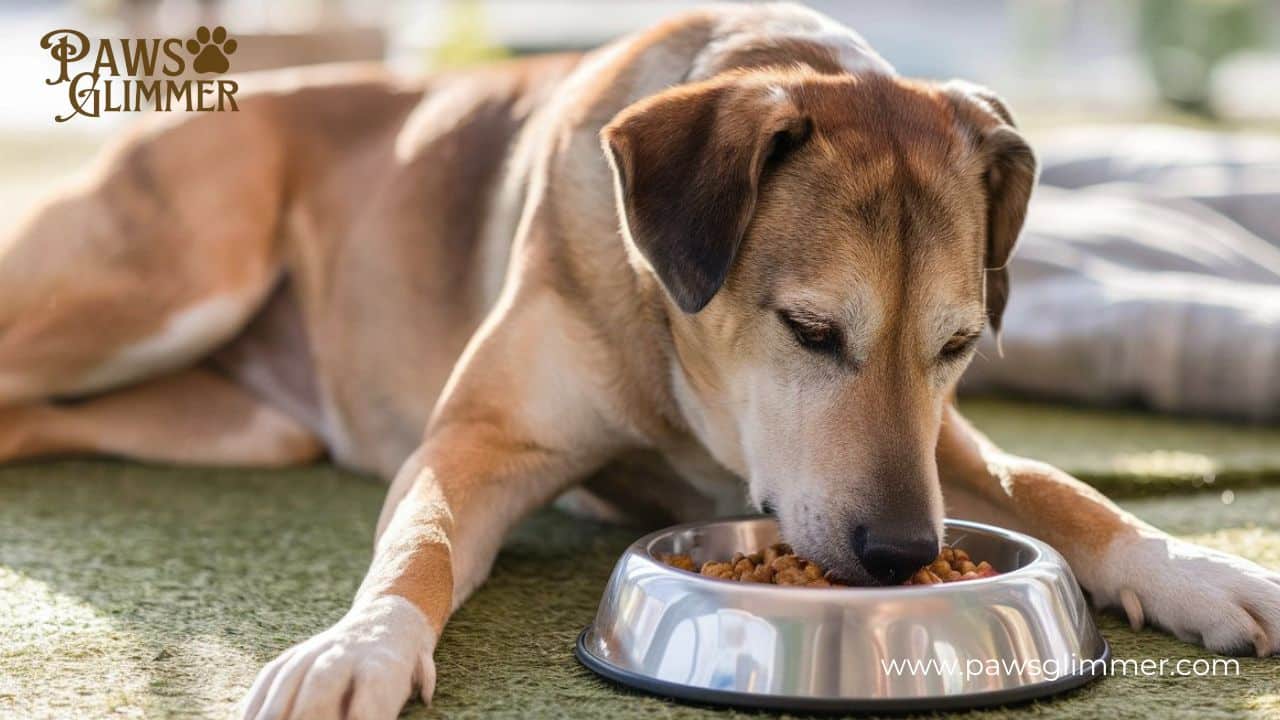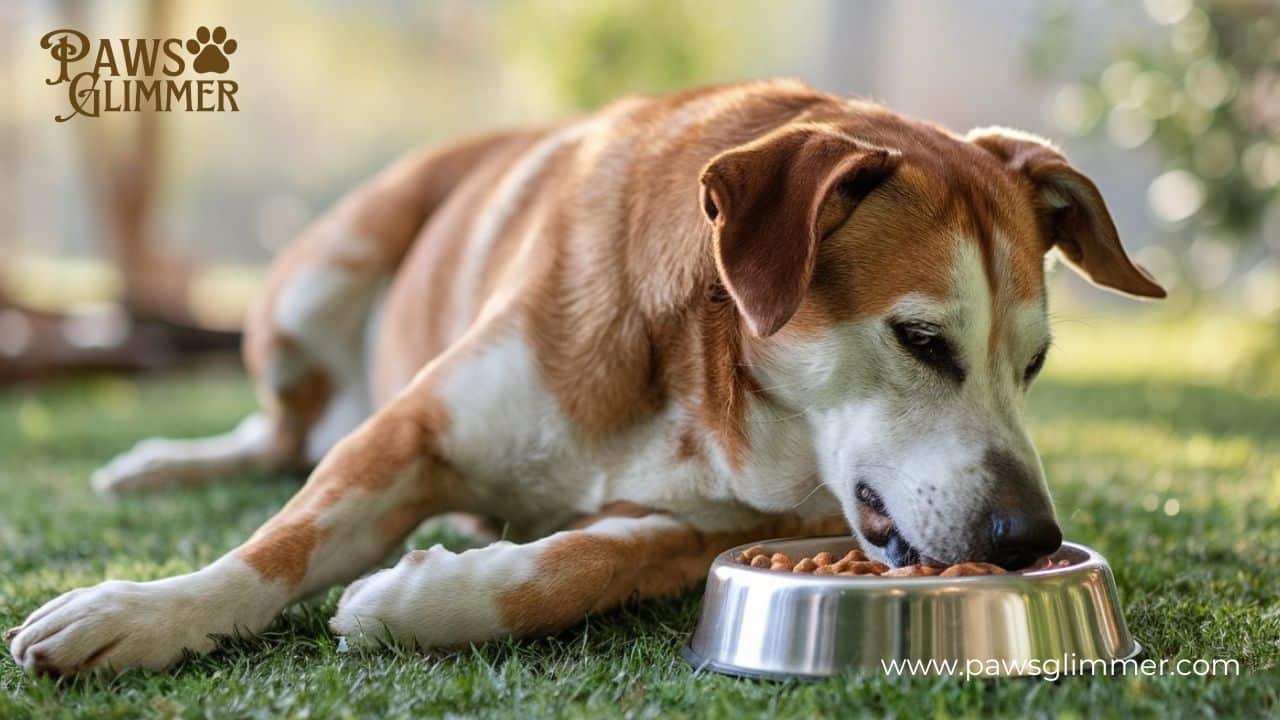Have you ever wondered why your furry friend sometimes chooses to lay down while enjoying their meal? This peculiar behavior, often referred to as prone feeding or reclined dining, has puzzled many dog owners. In this comprehensive guide, we’ll explore the fascinating world of canine eating postures and uncover the reasons behind this intriguing habit.
The Curious Case of Dining Dogs: An Introduction
Picture this: You walk into your kitchen, expecting to see your loyal companion standing at their food bowl. Instead, you find them sprawled out on the floor, contentedly munching away. This scene of horizontal munching isn’t uncommon, but it raises questions about our dogs’ eating habits and what they might signify.
Don’t Miss These Helpful Guides
Evolutionary Roots: Tracing the Behavior Back in Time

To understand why dogs sometimes opt for supine consumption, we need to delve into their evolutionary past. Wild canines, the ancestors of our beloved pets, often ate in a prone position for several reasons:
- Safety: Lying down while eating allowed them to stay low and less visible to potential predators.
- Efficiency: This posture enabled them to eat quickly and move on if threatened.
- Grip: For larger prey, lying down provided better leverage to hold and tear meat.
As dogs became domesticated, their eating habits evolved. However, some of these instinctual behaviors persisted, manifesting in what we now observe as laid-back feeding.
Decoding the Doggy Dining Posture: Comfort vs. Necessity
When it comes to canine eating postures, there’s often a fine line between comfort and necessity. Let’s break down the factors that might influence your dog’s choice to lay down while eating:
Comfort Preference
For many dogs, lying down to eat is simply a matter of comfort. Just as humans have preferred eating positions, dogs may find that prone feeding allows them to relax and enjoy their meal more thoroughly.
You May Also Like How to Euthanize Your Dog at Home Safely and Humanely
Natural Instinct
Despite domestication, dogs retain many of their ancestral traits. The urge to eat in a prone position can be an evolutionary trait or biological impulse that persists in modern canines.
Physical Convenience

Some dogs, especially larger breeds or those with long legs, may find it more comfortable to eat while lying down. This postural comfort can make mealtime more enjoyable for them.
Physical Factors: When the Body Calls the Shots
Sometimes, a dog’s choice to lay down while eating isn’t just about preference—it can be influenced by physical factors:
Skeletal Structure
Certain breeds, particularly those with deep chests like German Shepherds (also known as Alsatians or GSDs), may find it more comfortable to eat in a prone position due to their body shape.
Age-Related Changes
As dogs age, they may develop conditions like arthritis or hip dysplasia that make standing for long periods uncomfortable. Lying down to eat can be a way to alleviate discomfort during mealtimes.
Breed-Specific Tendencies
Some breeds, especially working canines and herding dogs, may be more prone to certain physical conditions that influence their eating posture. For example, shepherd dogs like the German Shepherd are known for their susceptibility to joint issues.
Health Considerations: Red Flags or False Alarms?
While lying down to eat can be a normal behavior, it’s essential to be aware of potential health issues that might cause this change in feeding patterns:
Discover More Tips and Advice About How To Stop Cat From Licking Wound?
Arthritis and Joint Pain
Dogs suffering from joint degeneration or other skeletal disorders may find it painful to stand while eating. Lying down can help alleviate pressure on sore joints.
| Common Joint Issues in Dogs |
|---|
| Arthritis |
| Hip Dysplasia |
| Elbow Dysplasia |
| Intervertebral Disc Disease |
Gastrointestinal Issues

In some cases, dogs with digestive problems may find that lying down helps them feel more comfortable during meals. However, persistent gastrointestinal issues should always be evaluated by a veterinarian.
Neurological Concerns
Rarely, unusual eating habits like consistent prone feeding could signal neurological problems. If you notice other changes in behavior along with this eating posture, it’s best to consult with a vet.
The Psychology of Canine Cuisine: Mental Factors at Play
A dog’s mental state can significantly influence their eating habits and posture:
Anxiety and Stress
Dogs experiencing anxiety or stress may feel more secure eating in a prone position. This behavior can be a form of self-soothing during mealtimes.
Resource Guarding
Some dogs may lie down with their food as a form of resource guarding. This innate behavior stems from the instinct to protect valuable resources, including food.
Past Experiences
A dog’s history can shape their meal routines. For example, a rescue dog who previously had to compete for food might prefer to eat lying down as a protective measure.
Environmental Influences on Eating Posture
The setting in which a dog eats can play a crucial role in their chosen dining posture:
Related Posts You Might Enjoy Tortoiseshell Cat
Bowl Height and Accessibility
Improperly sized or positioned food bowls can make standing to eat uncomfortable. Ensuring the right bowl height for your dog’s size can encourage more natural eating postures.
Floor Surfaces
The texture and temperature of the floor can influence a dog’s eating position. Some dogs may prefer to lie down on cool surfaces, especially during hot weather.
Surrounding Distractions

A busy household or other pets nearby might cause a dog to lie down while eating as a way to focus on their meal and feel more secure.
To Intervene or Not: Navigating Owner Responses
As a dog owner, you might wonder whether you should do anything about your pet’s prone feeding habit. Here’s what to consider:
When to Let Sleeping (Eating) Dogs Lie
If your dog appears comfortable and healthy, there’s usually no need to change their eating posture. Personal preference plays a significant role in a dog’s feeding patterns.
Signs That Warrant Veterinary Attention
Be alert for these potential red flags:
- Sudden change in eating posture
- Signs of pain or discomfort while eating
- Decreased appetite or difficulty eating
- Other changes in behavior or mobility
Learn more about A cat purrs loudly
Strategies for Encouraging Upright Eating
If you’re concerned about your dog’s prone feeding, try these approaches:
- Adjust bowl height
- Use puzzle feeders to engage your dog
- Create a calm eating environment
- Consult with a veterinarian about potential underlying issues
The Great Debate: Flat vs. Elevated Feeding
The discussion around the best feeding position for dogs is ongoing. Here’s a quick comparison:
| Flat Feeding | Elevated Feeding |
|---|---|
| Natural posture | May reduce neck strain |
| Suitable for most dogs | Beneficial for some large breeds |
| Can encourage slower eating | Might help dogs with certain health conditions |
The best choice depends on your individual dog’s needs and preferences.
Beyond Posture: Other Quirky Canine Eating Behaviors
Dogs exhibit a wide range of interesting dietary behaviors. Some common quirks include:
- Pre-meal rituals (e.g., circling the bowl)
- Food burial or caching
- Pacing while eating
- Eating only when their owner is present
These behaviors often have roots in a dog’s ancestral instincts or past experiences.
Case Study: Max the German Shepherd
Max, a 7-year-old German Shepherd, suddenly started lying down to eat. His owners noticed he was also less enthusiastic about walks. A veterinary examination revealed early signs of hip dysplasia. With proper management, including joint supplements and an adjusted feeding setup, Max became more comfortable during mealtimes and regained his enthusiasm for activities.
Conclusion: Embracing Your Dog’s Dining Quirks
Understanding why dogs lay down to eat involves considering a complex interplay of factors, from evolutionary traits to individual choice. While it’s often a harmless preferred posture, it’s essential to stay attuned to your dog’s overall health and behavior.
Remember, every dog is unique, and what works for one may not suit another. By observing your pet’s feeding patterns and staying informed about potential health issues, you can ensure that mealtime remains a comfortable and enjoyable experience for your furry friend.
“To understand your dog’s behavior, you must first understand their nature. Their quirks are not just habits, but windows into their instincts and needs.” – Dr. Jane Goodall
FAQs: Addressing Common Concerns
Q: Is lying down to eat harmful to my dog’s digestion?
A: Generally, no. Dogs have evolved to digest food in various positions. However, if you notice any digestive issues, consult your vet.
Q: Should I be worried if my dog suddenly starts eating lying down?
A: A sudden change in eating posture could indicate discomfort or an underlying medical condition. It’s best to have your dog checked by a veterinarian.
Q: Can I train my dog to eat in a different position?
A: While it’s possible to encourage certain eating positions, it’s often unnecessary unless advised by a vet. Respecting your dog’s comfort preference is usually the best approach.
By understanding the various factors that influence your dog’s eating posture, from natural instinct to potential health problems, you can better cater to their needs and ensure their overall well-being. Whether your furry friend prefers prone feeding or upright dining, the most important thing is that they’re happy, healthy, and well-nourished.

Raymond Dandan is a seasoned pet blogger with a passion for feline care and behavior. With years of experience and a deep love for cats, Raymond brings expert insights and practical tips to “PawsGlimmer.” His engaging writing and thorough research help cat owners provide the best for their furry friends, making him a trusted voice in the pet community.







